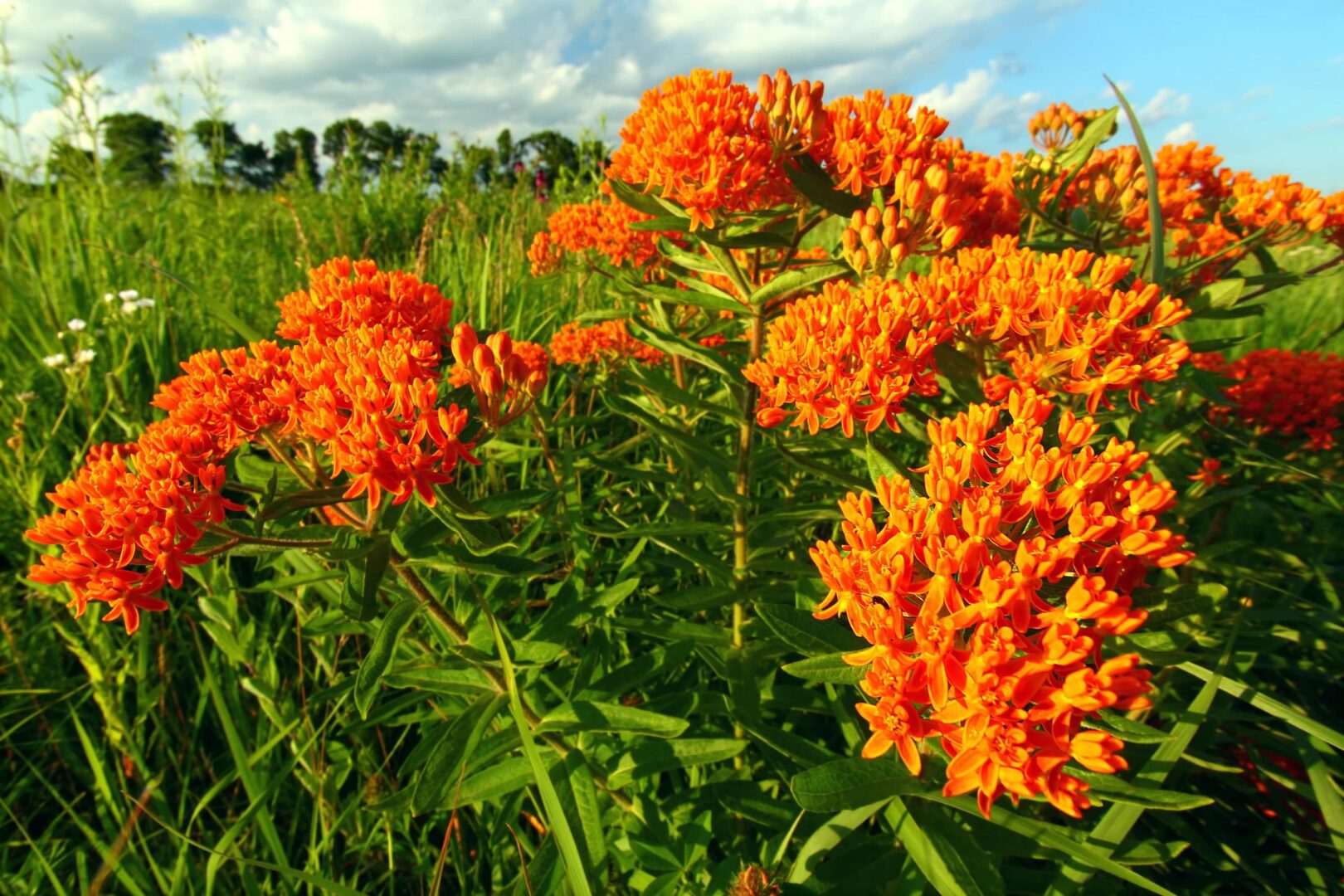JUNE IS PERENNIAL GARDENING MONTH, SO SEEMS ONLY FITTING TO HIGHLIGHT A PERENNIAL
Asclepias tuberosa – Butterfly Weed
For me, this was an easy choice. The common name for Asclepias tuberosa is Butterfly Milkweed or Butterfly Weed. This very hardy, native perennial has become so popular with gardeners over the past decade. I have learned much about this plant from homeowners transforming their landscape to more native plants to support all the beneficial insects, such as the Monarch Butterfly. To give you a brief history, Butterfly Weed is a tuberous-rooted, native, herbaceous perennial in the Apocynaceae family. Its Latin name, Asclepias, honors the Greek god of medicine, Asklepios. The species name, tuberosa, refers to the root.
A Few Points of Interest
- Butterfly Weed will become 1 to 2 feet tall and just about as wide.
- This plant needs to be planted in full sun to bloom. It will grow in almost any type of soil as long as it is well-drained.
- It is very drought tolerant once established.
- Butterfly Weed is deciduous and does have an erect growing habit
- The orange flowers are a nectar source for many butterflies and insect pollinators.
- The plant is a larval host for monarchs, appearing in late spring / early summer. The Monarch Butterfly lays eggs on this plant to feed their caterpillars.
- Butterfly Weed is resistant to damage by deer.
Butterfly Weed is a great plant to use to create a meadow garden. With its showy orange flower clusters on its upright stems, it can be paired with other types of milkweed, such as Hello Yellow and the Incarnata “swamp” Milkweed. Some other companion plants to consider for this garden are ornamental grasses, purple coneflower, asters, and more.
In a nutshell, this is what we need to consider doing with our landscape:
- Have less lawn & expand our landscape beds.
- Grow more native plants to support all our beneficial insects.
- Reduce the use of pesticides and insecticides.
- Save your leaves in the fall – leaves make good organic matter for the gardens.
- Share gardening with our younger generation.
PLANT A LITTLE HAPPINESS!!!!!!!!!!!!

